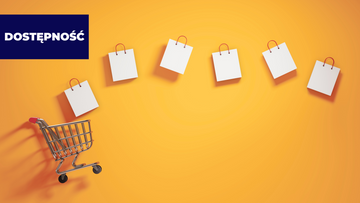The purchasing journey is also regulated by law. While the regulations don't specify the exact structure of each stage, this doesn't mean it can be structured arbitrarily. In this article, we'll focus primarily on the final stage of the purchasing journey: the ordering process. Read on to learn more.
The path to purchase is a broad topic, which, contrary to appearances, is closely linked to legal regulations. It is assumed that the first stage is building brand awareness. This occurs, among other things, through reaching potential customers with advertising. Advertising content and the methods of reaching consumers with it are regulated by law, and are also influenced by new regulations that come into effect on January 1, 2023. The regulations regarding information about the lowest price in the 30 days prior to its reduction also apply. ads .
In this article, however, we will focus primarily on the ordering process . Here are the three most important issues related to it.
Transparency of documents on the store website
First, we should ensure that key documents (such as terms and conditions or privacy policies) are easily accessible to consumers. This seems obvious enough, as these documents are usually visible in the footer of the website. However, we should ensure that this footer it also displays correctly on mobile devices , from which purchases are made very often.
Consumers should also have access to documents affecting the content of the sales contract on the order summary page. We should check whether the page footer is also visible at this stage and add appropriate information. checkboxes (more about them below).
Furthermore, we should ensure that the website contains links to only one version of the Regulations or Privacy Policy. It sometimes happens that the footer contains the latest version of the regulations, but through, for example, the FAQ tab you can access a different, older version.
Order summary page and checkboxes
A properly constructed order summary page should include information about the buyer's details, the names of the ordered goods, their prices, the shipping cost, and the total price . The name of the order completion button is also important, as it should indicate that the consumer is not only placing an order, but also declares that he will pay them – the simplest solution seems to be the name “I buy and pay”, but it is not the only option.
Additionally, it's important to include checkboxes regarding consent to be bound by the terms and conditions and consent to the processing of personal data. By allowing consumers to select the checkbox, we can ensure that actively accepted on certain provisions/consents.
Importantly, the checkboxes above and those regarding marketing consents should not be selected as accepted by default. Consumers should be able to check, rather than uncheck, specific boxes first.
The provisions implementing the Commodity Directive also influence the need to consider placing an additional checkbox in case of goods with defects. If you would like to learn more and are interested in implementing appropriate solutions, please contact us.
Order confirmation email
A valid order confirmation email should complete the ordering process.
Content of the order confirmation email is not arbitrary . The consumer should be transparently informed, in particular, about the ordered goods, their prices, delivery price and total price, as well as about his rights.
In some cases, the e-mail should also include other information related to specificity of the transaction (in cases such as the sale of digital content and services or goods with a defect that the customer has accepted).
If you have any doubts as to whether the ordering process in your store meets legal requirements, We encourage you to contact us . Checking these issues is part of the legal audit offered by ecommerce.legal.





